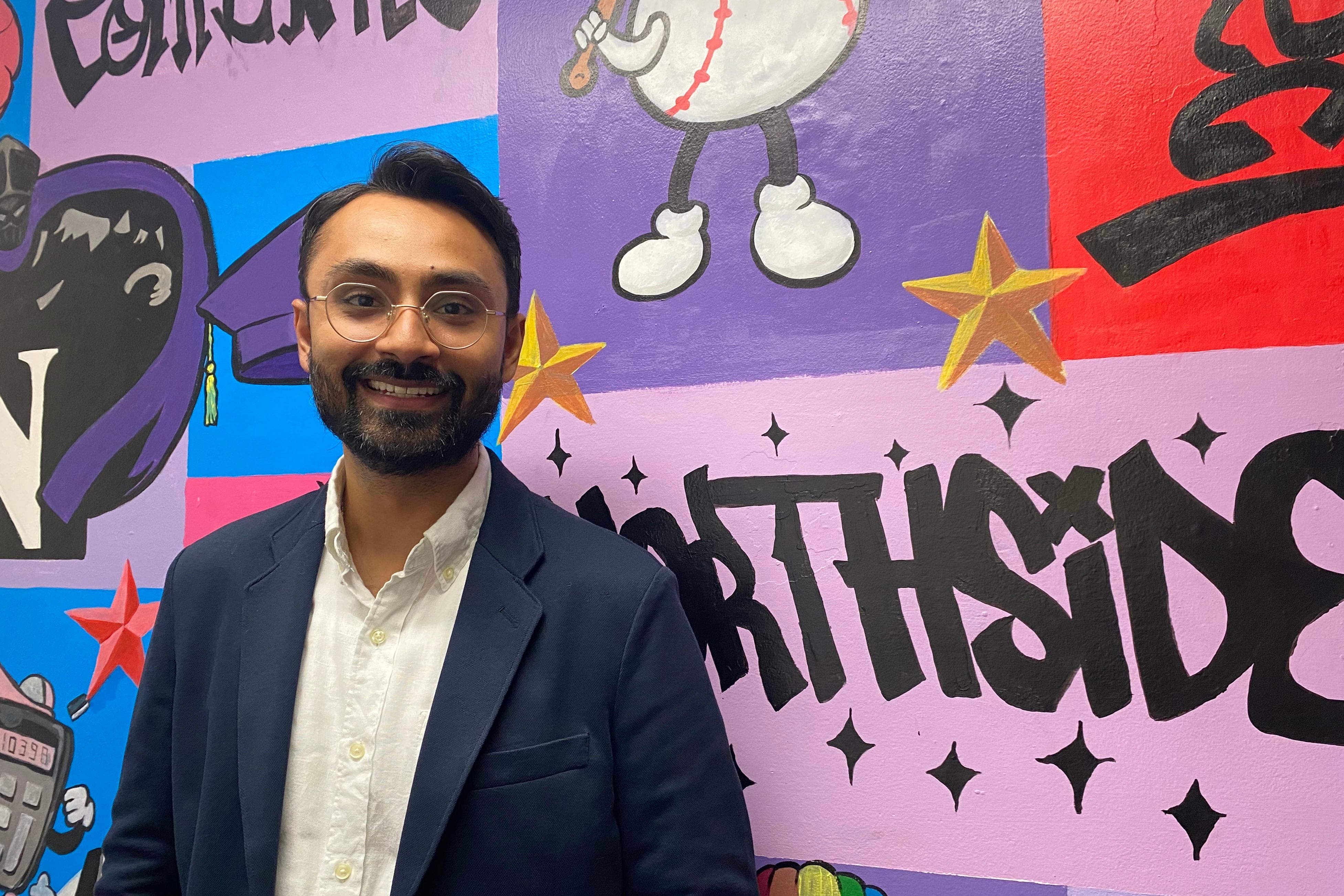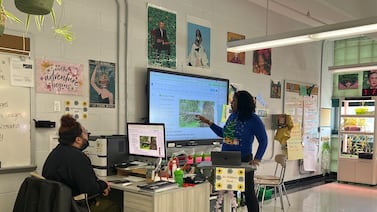Sign up for Chalkbeat New York’s free daily newsletter to get essential news about NYC’s public schools delivered to your inbox.
Like many students, Nicole Acevedo has come to rely on artificial intelligence.
The 15-year-old recently used it to help write her speech for her quinciñera. When she waits too long on completing homework, Nicole admitted, she leans on the technology so she can hand assignments in on time.
Her school, located in the Greenpoint/Williamsburg area of Brooklyn, has also embraced artificial intelligence. But it is hoping to harness it in ways that supplement learning rather than supplant it.
This past school year, Nicole’s freshman seminar class at Northside Charter High School incorporated an AI writing tool created by the school’s tech-forward chief academic officer, Rahul Patel. The Center for Professional Education of Teachers, based at Columbia University’s Teachers College, acted as an adviser on the project.
Called Connectink, the tool acts like an on-demand writing coach, providing students with such support as sentence starters when they get stuck, or prompts to encourage them to stretch their work using dialogue, descriptions, or rhetorical questions. It seeks to provide immediate feedback for students since educators can only provide so much attention to individual students in a given period.
As New York City, as well as the federal government, promise to incorporate more AI tools into classrooms, concerns abound, not only related to students using the technology to cheat on assignments but also about possible racial bias in AI teacher tools. Recent findings revealed bias in tools designed to support classroom planning, lesson differentiation, and administrative tasks.
Patel is hopeful Connectink might offer some early lessons on how to approach AI’s educational potential thoughtfully.
The Center for Professional Education of Teachers researched a pilot of the tool with about 360 students at three high schools in the last six weeks of the school year. The tool was used to help students write personal narratives as a way to build confidence in developing their own voice as well as use their writing as a way to build empathy and connect with others.
Preliminary findings showed promise. In a pre-project survey, just 37% of the students considered themselves “good writers,” though 68% said they liked getting feedback on their writing. Nearly half said they felt more connected to themselves or to their classmates through their writing but only a fifth believed their writing could have an impact on their world around them, said Roberta Lenger-Kang, director of the Center for Professional Education of Teachers.
In their reflections at the end of the project, students shared insights about themselves as writers, acknowledging they had good ideas but needed help organizing them or getting started, Lenger-Kang said. Many of the students’ writing transformed over the course of the pilot: Several could only write about four sentences after 30 minutes at the start. At the end, many students were writing multiple paragraphs and weaving in thoughtful descriptions.
As Nicole wrote an essay about a fight she had with a childhood friend while in the field with her softball team, she used the tool to help her broaden her choice of words and add more details.
“I struggle a lot with repeating things like ‘because.’ I use that a lot,” Nicole said. “This tool helps me kind of get out of using those words. It makes it more, like, professional because my writing was kind of like middle school, elementary.”
Using AI to get over writer’s block
Patel, who just completed his first year at Northside’s helm, was inspired to create an AI tool after using the technology to create a book while his wife was pregnant to read to their soon-to-be-born son about their family. Working with Teachers College, however, he realized how important it was to have a tool that inspired writing but didn’t do the writing itself.
“It’s more about trying to get them jazzed about writing because our students don’t write a lot on their own,” he said. “They send text messages … But they don’t write.
Often, they seem stuck, he said, recounting a prompt to write about a time they stood up for themselves.
“They’re good at, ‘The one time I had to stand up for myself is,’ and then they can’t go any further,” Patel said. “I think a lot of it has to do with: They don’t believe in themselves.”
Many students are indeed using AI to write assignments for them, Lenger-Kang acknowledged, and she cautioned against tools that do that at this stage of learning for students.
“Research is already revealing that this is a short-cut solution to developing critical thinking, reading, and writing skills,” she said. “That short-cut increases self-doubt, increases future stress, and creates gaps in the learning process for skills that are deeply needed across all industries.”
A renewed focus on writing as literacy grabs spotlight
The tool comes at a time when a confluence of factors has pulled the focus away from writing instruction. Not only has improving writing instruction been overshadowed by the attention on reading, many educators tend to teach the type of writing that exists on tests, Lenger-Kang said.
“Instead of developing an understanding of the writing process that includes using writing as a way of thinking, or a form of self expression, or a method of persuasion, or an art form — writing has predominantly become a performance,” Lenger-Kang said. “Students focus on writing the answer — rather than the idea. Because of this focus, the act of writing is painfully wrapped up in the performance anxiety of getting the right answers.”
Additionally, since the pandemic, when even very young children went remote, much of writing is now mediated by the computer, which impacts how much time students spend thinking about their words, and also is often “disrupted by the red squiggly line indicating they’ve made a mistake,” she said.
Patel is hopeful that educators consider the effects of AI as various tools are more widely used in classrooms.
“I think right now it sort of feels like a money grab, like it’s the shiny toy, and everyone’s after it,” he said. “I do think we’re going to start to see some negative impact if we don’t shift the educational tools that use AI.”
Amy Zimmer is the bureau chief for Chalkbeat New York. Contact Amy atazimmer@chalkbeat.org.






